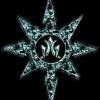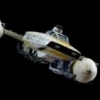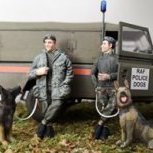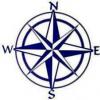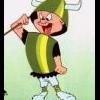Search the Community
Showing results for tags 'HORNET'.
-
Another Desert Storm warrior in my collection. Hasegawa kit, Aires avionic bays and exhaust nozzles, Eduard armament, Brengun wheels, Quickboost seats and Flying Leathernecks decals. Happy modelling!
- 19 replies
-
- 72
-

-

-
- Hornet
- Desert storm
-
(and 1 more)
Tagged with:
-
Next DB Model Kits (DBMK) projects after the 1/48th Supermarine Scimitar (link) are 1/32nd de Havilland DH.103 Hornet & Sea Hornet kits! These kits are based off factory drawings using a CAD model developed by Arthur L. Bentley. It will be mixed media kits including IM, PE, Resin and 3-D printed parts. Firsts 3D renders V.P.
- 41 replies
-
- 10
-

-
A drawing I did of a CF-188 in it’s early days of service. The aircraft visited our local airbase quite often for gunnery camps in the mid eighties and that is how I depicted it.
-
F/A-18C VFA-27 Royal Maces (K48114) 1:48 Kinetic via Luckymodel.com The F-18's inauspicious beginnings as the runner-up of the light fighter contest that gave the US Air Force the F-16 Fighting Falcon were soon left behind when it was decided that something a little more rugged was needed for the Navy and Marine Corps, who would need to fly from carriers and carry warloads at supersonic speeds. Single and two-seater variants were offered, with the A and C being the solo pilots, and the B and D the two-seaters, all of which were combat capable. The larger E/F Super Hornets were later created to extend the capabilities of the airframes, with a substantially larger airframe and load carrying capability, distinctive both by their size and their squared-off intakes. The US withdrew their Cs from service in the early years of the new millennium, but the type carries on in service with other operators and is likely to continue to do so for some considerable time. Strike Fighter Squadron 27 (VFA-27), known as the Royal Maces transitioned to F/A-18As in 1991, after flying A-7 Corsair IIs for some years. They moved to the more advanced C variant in 1994, which they operated until 2004 when they received the first of their more advanced F/A-18E Super Hornets, again one of the single seat variants. They flew the Cs extensively in the Middle East, operating over Iraq and Afghanistan, where they provided fighter cover and strike operations, being able to switch between roles at short notice, which made their usefulness manifold. The Kit This is a reboxing of Kinetic’s tooling from 2016, so is a relatively modern tooling that has plenty of detail moulded-in. It arrives in the modern gold themed box with a painting of a Royal Maces bird flying toward us over broken clouds, and inside the top-opening box are twelve sprues in grey styrene, three smaller clear sprues, a small Photo-Etch (PE) fret, three decal sheets and the instruction booklet printed in black and white, which also follows through into the profiles on the back pages. Detail is excellent throughout, extending to all the usual focal points, especially the cockpit and gear bays, with a profusion of weapons included in the box that would sometimes be extras with other manufacturers. Construction begins with the Martin Baker Mk.14 NACES ejection seat, building the chassis from two halves, and adding the seat cushions as a single part, plus the top of the headbox, the ejection rail in the rear, and the initiator handle between the pilot’s knees. A simplified PE seatbelt set is added after painting from two parts. The cockpit tub can be used for single and dual seat kits, populating just the front section for this boxing, with a detailed instrument panel, rudder pedals, control column, and instrument inserts on the diagonal sections of the side consoles. A scrap diagram shows the colours for the panels in detail, using AMMO paint codes as it does throughout. The rear bulkhead covers the unadorned rear of the tub, then the rear cockpit is hidden by a cover, and the sidewalls are inserted to the edges of the side consoles in the front cockpit. The bang seat is dropped in, and the sub-assembly is put to one side while the other necessary areas are made up to permit closure of the fuselage. The twin intakes are first, each one made from two halves with the front compressor fan closing the rear, then the exhausts are built as a pair from top and bottom halves, with lots of deep ribbing moulded-in and a couple of ejector-pin marks, the rear face of the engine up front and the exhaust petals at the rear, making a well-detailed sub-assembly. The main and nose gear bays are each single parts with some impressive detail moulded-in, and there’s another scrap diagram showing the colours to add extra realism to the bays. The exhausts, main gear bay and two small ancillary sections are inserted into the lower fuselage along with the insert for the crew ladder, then the intakes are dropped in over the curved roof of the main bays, followed by a break to create the nose from two halves, a bulkhead, lower insert and the refuelling probe in either deployed or closed positions. A few small lumps and angle-of-attack probes are added on the sides of the nose after drilling out the flashed over holes from inside. Turning the lower fuselage over, the oval intakes, splitter plates and triangular spacers are installed on each side, then the nose and cockpit are placed into the front of the open lower fuselage assembly. The upper fuselage is prepared by adding the lower wings, or skipping ahead to depict the model with folded wings for stowage under decks. The lower wings have four holes drilled out for stores, and a small PE part is fitted into the hinge-point on the upper wing, adding the coaming to the front of the cockpit cut-out. At this point you can close the halves of the fuselage, followed by the leading-edge slats and flying surfaces on the main wings, along with the actuator fairings to depict them for straight-and-level flight, or down for landings by using a different set of parts. Different parts are also used when applying the flying surfaces to the actuators, with a scrap diagram showing the correct location of the parts in position on the wings. To fold the wings, the tips are removed from the main wing parts before they are joined to the lower fuselage, fixing replacement outer panels to the separate wing-fold at an angle to the main planes, and gluing two small PE parts into the joint. The flying surfaces are fitted aligned with the wings when the wings are folded, with another scrap diagram showing the finished article. The cockpit has an additional section of the spine added over the back of the cockpit, adding single-part elevons into holes in the sides of the tail, and the rudders using the usual slot-and tab method at an angle to the vertical, with the air-brake between them in either the deployed position using the actuator jack, or down by omitting the jack. Moving forward, the canopy can be posed open or closed, and because of the modern ‘blown’ style of the glazing, there is a fine line running down the outside of the centreline, which you can choose to ignore, or sand back flush with the rest of the surface, and polish back to clarity with successively finer grit paper, finishing off with a dip in Klear or with polish. The canopy opener is glued to a lower frame and has a set of PE rear-view mirrors on the forward edge, fixing to the rear of the cockpit opening either closed with one jack, or open with a different jack part propping it up to the correct angle. Under the fixed windscreen the HUD frame is folded up from a PE part, and has three clear lenses inserted before it is dropped into its recess in the coaming and the windscreen is glued down over it. It’s time for the Hornet to stand on its own three legs, or four wheels depending on which way you prefer to look at it. The nose strut is sturdy, and has several additional parts plus a clear landing light fitted, with two three-part wheels glued to the axles, and a captive bay door on the retraction jack. Before it is glued into the bay, additional details are added to the walls by putting some PE ‘greeblies’ in place, and after the leg is in, the three bay doors are fixed to the sides of the bay. The main gear legs are handed, adding three smaller struts to the L-shaped main leg before installing the three-part wheels onto the axle at the end, then inserting them into the bays and surrounding them with three bay doors and their actuators, with three scrap diagrams holding your hand along the way. To finish off the basic airframe, a profusion of antennae, aerials and probes are dotted around the exterior, adding the chaff and flare pods near the main gear legs with PE ‘waffle’ inserts, then the arrestor hook nestles between the two engine nacelles at the rear. A crew ladder is provided on the sprues, made up from the two side rails and individual rungs, the finished item held in position by a pair of struts resting against the side of the fuselage. Weapons The Hornet is competent bomb-truck, and needs pylons to hang its weapons from. The instructions show them being made up, with no indication of how many of each to build. The centre pylon is an easy guess, and there is just one of those with two combined mounts/sway-braces inserted in the mating surface. There are four deep wing pylons that also have two sway-braces each, and two dual-rail adapters that permit a single rail to mount two weapons on two pairs of sway-braces. There are also three 330gal fuel tanks that are made from two halves for mounting on the inner wing pylons, with one spare of for the centreline pylon. In addition, there are the following weapons and pods: 2 x AIM-120B AMRAAM with adapter rail 2 x AIM-9M Sidewinders 1 x AAS-38 Targeting Pod 1 x Sniper XR Pod 1 x AGM-84D Harpoon or AGM-84E SLEM 1 x AGM-84H SLAM-ER next generation Harpoon 1 x AGM-154 Cruise Missile There are also the following on the sprues: 2 x AIM-120C AMRAAM 2 x AIM-9X Sidewinder 2 x GBU-12 Paveway II 2 x GBU-87 Cluster Munition Dispenser 2 x GBU-38 JDAM The weapons and pods are well-detailed with multiple parts used to achieve a good representation, plus additional fins and slide-moulded exhausts on the AIM-120s and AIM-9Ms thanks to their location at the edge of the sprues. There are also stencil decals and full painting guides included in the instructions for all weapons that show the locations on a table below the painting guide. Markings There are three options on the decal sheet, all of which are from the Royal Maces, as it’s their boxing after all, and all share the same black spine and tail, with the mace in the grip of a gauntlet on the outer tail fins. From the box you can build one of the following: Decals are by Cartograf, which is a guarantee of good registration, sharpness and colour density, with a thin gloss carrier film cut close to the printed areas. The smallest sheet is printed anonymously, but is more than adequate for the task at hand, which is to stencil some of the weapons. Conclusion A good-looking and well-detailed model of this mainstay of the modern US air power, depicted during interesting times in the colours of a well-known and respected squadron. What’s not to like? As well as being available from Lucky Model in Hong Kong, you can now select UK, USA, Australia, and Malaysia with local shipping when purchasing your model, as Kinetic now have local warehouses in these locations to reduce the postage costs for us modellers. Highly recommended. Review sample courtesy of
-
I know, it's hard to get too excited over a teen series. But, it's my first and it's essentially obligatory. This is the 1/72 Hasegawa F/A-18C. Generally a nice build, though there was a bit more flash than one might expect from Hasegawa. Nice engraved detail for the era of the kit, though weapons options were slim so I supplemented with Mk 83s from Hasegawa's weapons expansion pack for stooges. Painted with Mr. Color and Alclad, weathered with Tamiya enamel wash and Mig/Abteilung oils. Thanks for looking!
-
Hi all. I stumbled across these today in an ongoing search to secure the appropriate decals for my post-Christmas build of an F/A-18F in 1/48. Plan is to do Phoenix and Bob's jet sitting on the carrier deck. Of course, having the right markings would be great, especially for canopy names and in particular, helmet markings. When I saw these I thought I'd hit the jackpot. Then I realised they're only doing them in 1/72 and 1/144, but not 1/48 for some bizarre reason 😩 Does anyone with better knowledge know if there's an intent to do 1/48 decals from the movie for the regular Hornets by this manufacturer or others, not just the instructor one? I keep seeing Fightertown decals mentioned but that doesn't seem to be going anywhere, and if they're the same sets as previously released then I think they're incorrect based on the preview images. They're pretty spartan jets so the numbers can likely be sourced without issue, but having those names and helmet decals would be perfect to get it right. Gaz
-
Hi all. It's been a slow year at Casa de Crosby but a second build has crawled it's way over the line. The kit is the quite nice 1/72 Academy F/A-18D converted to an Aussie B. In order to get to the B version that we flew, a few lumps and bumps need to be removed from the plastic as well as a few omissions in the way of the ECM blister behind the canopy and the cheeks of the nose. Aussie machines also had the catapult launch bar replaced with a square piece of steel bar similar in weight to the original launch bar. They did operate without the launch bar for some time however shimmy problems of the nose gear required the installation of the bar to negate this problem. Another item that needs to be addressed for RAAF machines is the tail stiffener on the left side of each of the fins. The Kinetic kit comes with the stiffeners as etch items so I scanned then traced them in Affinity Studio, scaled them down to 1/72 and then cut them in vinyl. A bit of Mr Surfacer of the top and they blend in well. The reinforcing cleats at base on the inside of the fins are also needed however as this kit was a D version they weren't supplied. If you've the A/A+ boxing you'll be in luck as they are included. I made mine from some plastic card cut to appropriate size and shape. The decals are from Ronin Graphics here in Australia. They are very thin and the colour density is excellent but they are quite fragile if not handled correctly. I managed to fold a section of the tiger decals on itself so had to order a second set...doh. Anyone want a 95% complete set of this scheme in 72nd? A colour chip of the orange is also provided with the decals so some paint alchemy, 30 minutes and lots of test spraying and I think I nailed the colour. There are many photos of this jet showing how worn out the grey scheme was at the end of its service life. A good example are the stabs. The left and right side are inter-changeable and this can be seen in the photos with the lighter colour of the underside appearing on the top side indicating they had been swapped out. I could spend hours on the weathering of the airframe but I'm happy with where I've got it to. Perhaps if it was 48th I'd spend a lot more time on it. Enough words, onto the pics. Hope you like! Mick The sticker is courtesy of a local chap in my home town who does a heap of cool retro style ADF stickers. The badge is also the official number of total hours that RAAF Hornets flew during their years of service. Bancroft (the workshop mascot) has lined up for the first ride.
- 20 replies
-
- 42
-

-

-
Next Kotare Models (link) kit project may be a 1/32nd de Havilland DH.103 Hornet or/and Sea Hornet. Source: https://www.tapatalk.com/groups/hyperscale/a-bit-of-a-surprise-from-tuesday-s-ipms-meeting-he-t531675.html V.P.
- 12 replies
-
- 2
-

-
F-18E/F Hornet Control Surfaces Set (7477 for Academy Kit) 1:72 CMK by Special Hobby This set allows all the wing control surfaces and the rudders to be positioned as the modeller wants. These jets are often seen on carrier decks with everything extended. All of the kit control surfaces will need to be cut off to use these. This set arrives in CMKs normal plastic/card box. The parts require minimal clean up from the casting blocks all on the edges that attach to the airframe, and all look to be top quality. This will add something extra to your kit Highly recommended. Review sample courtesy of
-
Revell is to release in November 2016 a new tool 1/32nd Boeing F/A-18E Super Hornet kit - ref.04994 What's wrong with the Trumpeter's 1/32nd Super Hornet? Followed or not in 2017-2018 by two seats 1/32nd Boeing F/A-18F Super Hornet and EA-18G Growler? Source: http://www.plastik-modellbau.org/blog/revell-neuheiten-2016/2016/ V.P.
-
Hello, Here's my just finished 1/48 Kinetic F/A-18C Hornet, done as a VFA-81 jet from the 1991 Gulf War. I was originally going to build this for the DS GB here on BM, but I never really took in progress pics of it. Oh well... The kit is not the easiest to work with, especially around the nose and intakes, but I've learned from it, so a future build might be easier to put together. Other things used were a Walleye and data link pod from Astra Resin, a pilot figure from PJ Productions, and a laser spot tracker pod from the Hobbyboss Hornet kit. Painted with Mr Color mostly, and a VMS flat coat, which I really like. And the real one during ODS: Thanks for looking, I hope you like it. Pete
- 21 replies
-
- 57
-

-
I am currently building a lovely Cf-18. I like my aircraft to carry a lot of bombs and missiles, but i am unsure about what canadian horners can/do carry... bomb loadouts would be preferred. Thank you in advance
-
F/A-18C Exterior Set (MD4844 for Hobby Boss) 1:48 Metallic Details The origins of the Hobby Boss Legacy Hornet line of kits date back to 2007, with a few reboxings in various schemes, including the RAAF airframe we reviewed some years ago. Like all kits it could do with some upgrading, which is why Metallic Details have created this new exterior set for us the modellers. It arrives in the by now familiar resealable clear foil bag with card backing, and the two Photo-Etch (PE) frets taped to the card so they don’t rattle round and get damaged. Behind the card are the instructions, folded neatly in half. Construction begins with the vents either side of the cockpit spine, which have the chunky inner section removed to be replaced by the new covers that glue straight into place from inside. Then chaff & flare boxes are added to the underside along with a large vent on the centreline and raised oval lips to two depressions forward of the main gear bays. Inside the short oval air-intakes a new engine front is provided, and the splitter plates are skinned with new highly detailed parts, taking care with their orientation as per the scrap diagram provided. The rear faces of the engines are augmented by adding two rings to the kit part, building up the detail of the afterburner ring, then rolling up a new internal trunking skin to fit inside the exhausts, all of which is duplicated with the other engine. A stiffening web for the inside of the central airbrake are stuck to the inside of the part, made from four pieces in total and a little folding required to get it all looking good. Slime lights are included for the tails and nose, then a pair of detailed insert panels are fitted on each side of the fuselage under the tail, along with another pair of slime lights and panels, plus tiny detail parts for the strengthening plates at the base of the tails, and a small intake near the top. On the inboard face of the tail, there are three more strengthening plates added to the existing parts, this time folded to an L-shape to match the contours of their location. Under the nose two areas should either be removed or scraped thinner to accept the insert panels that improve detail immensely in those locations, with the results being well worth the effort. You have a choice of two types for each of the two panels, which should be contoured to follow the curve of the nose. This same technique is used on the shoulders of the wings to insert another panel that has two circular(ish) vents of two optional styles added, another appliqué panel just forward of the vents, and the kit strake next to them is adjusted to allow the fitting of a base-plate from PE. A panel is added under the starboard LERX, and a set of bird-slicers for the nose if they were fitted on your decal choice. Conclusion A lovely set that adds some crisp detail to the standard kit, and we can’t wait to see the interior set they have for it. You can see lots of pictures of the parts in situ on an unpainted model by following the link below. Very highly recommended. Review sample courtesy of
-
In 2020 Kovozávody Prostějov (KP) is to rebox the 1/72nd Italeri MCDD F/A18 Hornet kits. Source: https://www.britmodeller.com/forums/index.php?/topic/235010228-kpaz-central-discussion-questions-answers/&do=findComment&comment=3565762 - ref. KPM0163 - McDonnell-Douglas F/A-18A/C Hornet - ref. KPM0164 - McDonnell-Douglas F/A-18B Hornet Box art V.P.
- 11 replies
-
- Hornet
- Kovozávody Prostějov
-
(and 1 more)
Tagged with:
-
Hi all, Does anybody have any experience with this old kit? Has it been re-packaged under another brand, perhaps more recently? I picked it up for about £8 on ebay a couple of months ago, and the detailing is quite poor so I'm looking into buying some aftermarket improvements for it. Thanks in advance
-
This is my 1/48 Hasegawa F/A-18 depicting one of VFC-12's well known splinter jets. My first and probably only build for the year.. I used Furball decals, an AIM-9 from a Kinetic kit, the seeker head cover was made with a cotton bud and some plasticard and the AN/ALQ-167 is from Wolfpack, generously donated by @Stephen - once again, thank you! The seat is from the kit, made a bit busier by adding belts made from foil off a wine bottle. Paints used were Tamiya and Mr.Hobby Aqueous for the main scheme and Mr.Hobby buffables for the metalwork. Weathering is a mix of oils and make up (matt eye shadow from the high street). Overall an enjoyable build, though I had to rescribe the kit due to shallow panel lines. A product of the kits age perhaps. It didn't give me much hassle beyond that so I'll forgive it.. I hope you enjoy the pics - comments and constructive crits welcome as always. Thanks for stopping by!
- 35 replies
-
- 61
-

-
This is a 1/72 Hasegawa Hornet TF-18A that I picked up pretty cheap on ebay. Not too impressed with the general lack of detail and moulding but I think it is an older kit maybe? The kit decals looked like they have been soaked and left to dry, so were cracked and pretty unusable in the main. I managed to rescue the tail codes luckily and had a spare set from a Revell Super Hornet thankfully that made up the rest. Paint is Mig Ammo and the base is yet again a sheet of 2500 grade wet n dry paper mounted on beech block (Kitchen drawer front!), painted to resemble a carrier deck (if you squint slightly and close one eye!). Apologies to Coastal Kits for copying their carrier deck design All comments welcome
- 10 replies
-
- 18
-

-
Hobby Boss is to re-release in late September 2018 its Hornet kit as 1/48th McDD F/A-18C Hornet RAAF kit - ref. 85809 Source: http://www.hobbyboss.com/index.php?g=home&m=article&a=show&id=119&l=en V.P.
- 7 replies
-
- 1
-

-
- Hobby Boss
- Hornet
-
(and 1 more)
Tagged with:
-
This is an older figure pulled from my stash and painted last weekend. Uncharacteristically for Hornet this one had quite a bit of pitting in the the metal casting (particularly over the trousers) but that didn't take long to address and it didn't detract from the appeal or the quality of the bare figure. I replaced the kit's metal PPSh with a plastic one from Miniart as the latter was rather more crisply defined - even if it is about 1mm longer overall. The sling is made from paper, and getting it made and attached to appear as though it is bearing the weight of the gun pushed me to my limit - I feel I've got better things to be bothering with at this stage in my life! Everything painted with Vallejo acrylics. For the life of me I still can't take photographs that please me.....
-
While shifting some piles of kits yesterday, I noticed that Hornet which I „inherited“ some years ago and never had a closer look into. Looking at the sprues, it’s neither their legacy tool nor the Monogram (though Scalemates claims the latter). It is a recessed (softish) panels kit, the surfaces looking „lifeless“ . As the box says Made in Korea, the moulds were likely made by Ace; however, that would in all probability mean a copy. Most if not all of the Ace kits boxed by Revell around that time were „inspired“ by Hasegawa, so how about that Hornet? I admit not having tested if google is my friend on this one...
-
Hello Folks, This is the quite old Hasegawa kit but still a good one. I added an Aires cockpit, Tamiya Sidewinder and Hi Decals product. The flaps were simply cut from the wings and the forward flap part made in plastic card. The ladder is from scratch too. Hope you like it. Cheers
- 21 replies
-
- 43
-

-

-
Hiller YH-32 Hornet (48005) 1/48 AMP via Mikromir Hiller Aircraft was one of the early pioneers of rotary winged or Helicopter aviation in the US. The company was formed in 1942 to develop the Hiller XH-44 for the US Army. The company would be renamed Hiller Helicopters in 1948. The YH-32 was an attempt to produce an ultra light helicopter and as such was to do away with a conventional engine. Hiller's solution was to mount two ramjet engines on the tip of the rotor blades. Another benefit from this design was that there was no need for a tail rotor and its associated equipment thus saving weight. However in practice the design had a few flaws. The rotor have to be subsonic and ramjets do not work well at these speeds. This resulted in poor performance, high fuel usage, and a poor range. The ram jets were also very noisy, and importantly for military operations were very visible at night. Versions were produced for the US Army and Navy but did not progress past the prototype stage. It is good to see companies bringing us kits outside of the main stream and the YH-32 certainly qualifies for this. Despite being 1.48 the kit is diminutive as was the real thing. The kit arrives on two sprues of plastic, a clear spure, with a sheet of PE and a set of masks. Construction starts f with the cabin. The main base is made up from mainly plastic parts, There are a couple of PE parts including the pedals and the seat frame. The seats follow with PE belts. The base is then added to the skids after they are made up. The rear body and tail assembly is then made up and fitted to the base. The large clear bubble is added along with a wire part which the modeller has to make, there as a template for this on the instructions. Finally the rotor assembly with the tip mounted ramjets is made up ad added on top. Decals A small decal sheet provides marking for 2 US Army & ! US Navy machines. Conclusion This is something which we never thought would be produced in kit form, it is one of those oddities from early Helicopter innovations that never took off (if you can excuse the pun), the kit is welcome addition to early Helicopters from AMP. Highly Recommended. Review sample courtesy of
-
AMP is to release a 1/48th Hiller YH-32 Hornet kit - ref. 48005 Source: https://www.facebook.com/mikro.mir.dnepr/photos/a.1416729748404757.1073741828.1416295571781508/1711065055637890/?type=3&theater V.P.
-
Having entered service just too late for WW2, the Hornet featured a similar wooden construction to the Mosquito, and served predominantly with the RAF in the Far East. It saw service during the Malayan campaign, flying with 33, 45, 64 and 80 squadrons, before being withdrawn and retired in 1956. As well as the Far East, the Hornet also equipped three squadrons in the UK, numbers 19, 41 and 65 sqns at Church Fenton, flying firstly in the long range fighter role then converting to ground attack as more Meteors became available. No. 19 sqn operated Hornets from October 1946 until January 1951. The Novo kit is basic but as far as I'm aware still the only 1/72 Hornet available? This one was built oob, except for a tiny bit of scratch building of the pilot's front console and having to source spare decals and serial numbers as the kit ones dissolved and were completely unusable. Although it's called finished, I'm still looking for the 19 sqn tailfin markings and the square marking on the left side of the fuselage behind the 'QV' code.
- 24 replies
-
- 20
-

-
With your indulgence...another 'golden oldie' dredged up from old Photobucket files. This is the simplified 'easy build' Hobby Boss F/A-18A Hornet, from the 'Blue Angels' boxing...dressed up with the excellent Leading Edge Canadian Hornet 2006 Demo markings. I spruced-up the very basic kit with added LEX fences on the wing roots, and a tail hook and assorted sensors and antennae from rod & strip stock. As a Canadian bird of that era, it also needed the characteristic nose-mounted searchlight, so I drilled a shallow hole and added a disc from clear acetate. The featureless interior tub needed the most help. I reduced a color internet photo of a Hornet instrument panel to size, printed several copies and used them as “layers” to make a semi-relief panel, attaching it in place with craft glue. Bits of styrene worked for seat features, and painted tissue for harnesses and chute pack. Another bit of clear acetate made up the the HUD. The kit came with three drop tanks and pylons...as well as some additional weapons pylons and racks...but no ordnance whatsoever. Since in my mind a Hornet looks 'nekkid' without something on the wingtip rails, I snagged a pair of Sidewinders from an old Testors F-5E, and painted them as inert practice rounds. A nice bit of color for ordinarily-drab grey birds.

